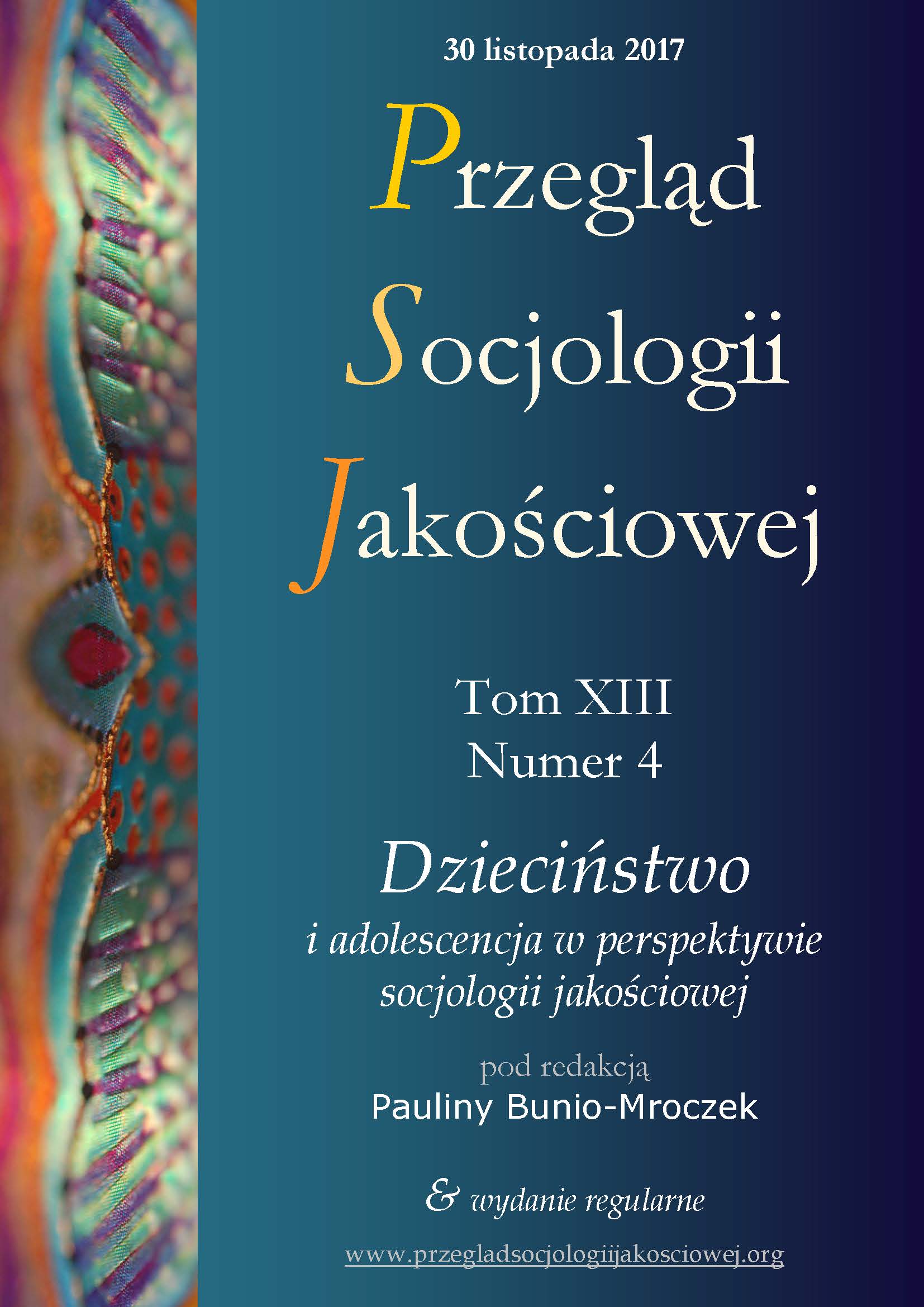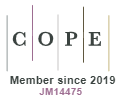Murale tworzą (naszą) historię: Obrazy na ścianie jako nośniki pamięci kulturowej. Analiza obecnego stanu warszawskich murali upamiętniających
DOI:
https://doi.org/10.18778/1733-8069.13.4.07Słowa kluczowe:
pamięć kulturowa, street art / murale, twórcy pamięci, historia Polski, WarszawaAbstrakt
Celem niniejszego artykułu jest analiza sposobów wykorzystania muralu jako formy artystycznej służącej upamiętnianiu (przypominaniu) wybranych historycznych narracji w stolicy Polski. W oparciu o analizę treści postaram się pokazać, że niezależnie od ich demokratycznego potencjału oraz potencjału wprowadzania treści subwersywnych w przestrzeni publicznej, murale upamiętniające – w przypadku Warszawy – przeważnie odzwierciedlają oficjalne narracje/wyobraźnie przeszłości, odtwarzając w ten sposób propagowaną przez instytucje publiczne, opartą na egoizmie narodowym męskocentryczną perspektywę historii narodowej. Odwołując się do instrukcji metodologicznych Wulfa Kansteina, wprowadzone zostanie pojęcie „drugorzędnych” twórców pamięci (secondary memory makers) w celu opisania pozycji, jaką twórcy murali zajmują w polu pamięci kulturowej Warszawy. Autorzy murali, z przyczyn głównie pragmatycznych, dostosowują swoje prace do wymagań instytucji publicznych odpowiedzialnych za produkcję pamięci oraz hegemonicznych dyskursów pamięci, rezygnując w ten sposób z możliwości bardziej demokratycznego działania w przestrzeni publicznej oraz w polu pamięci kulturowej. Obrazy na ścianach powstałe w ten sposób, celowo lub nie, stają się częścią bardziej złożonych, sponsorowanych przez państwo strategii „unarodowienia” przestrzeni publicznej.
Pobrania
Bibliografia
Anreus, Robin, Adele Greeley, and Leonard, Folgarait. 2012. Mexican Muralism: A Critical History. Oakland: University of California Press.
Google Scholar
Assmann, Aleida. 2008a. “Canon and Archive.” Pp. 97-109 in Cultural Memory Studies: An International and Interdisciplinary Handbook, edited by Erll, Astrid, and Ansgar Nünning. Berlin: Walter de Gruyter GmbH & Co.
Google Scholar
Assmann, Aleida. 2008b. “Transformations between History and Memory.” Social Research 75(1):49-72.
Google Scholar
Assmann, Jan. 2008. Pamieć kulturowa. Pismo, zapamiętywanie i polityczna tożsamość w cywilizacjach strarożytnych. Warszawa: Uniwersytet Warszawski.
Google Scholar
Assmann, Jan, and John Czaplicka. 1995. “Collective Memory and Cultural Identity.” New German Critique 65:125-133.
Google Scholar
Azaryahu, Maoz and Foote, E Kenneth. 2007. “Toward a Geography of Memory. Geographical Dimension of Public Memory and Commemoration.” Journal of Political and Military Sociology (25)1:125-144.
Google Scholar
Bevan, Robert. 2006. The Destruction of Memory: Architecture at War. London: Reaktion Books Ltd.
Google Scholar
Boyer, M. Christine. 1994. The City of Collective Memory: Its historical imagery and architectural entertainments. Cambridge: MIT Press.
Google Scholar
Crang, Mike, and Travlou, S. Penny. 2001. “The City and topologies of memory.” Environment and Planning D: Society and Space 19:161-177.
Google Scholar
Crinson, Mark. 2005. Urban Memory: History and Amnesia in the Modern City. London: Routledge.
Google Scholar
Duchowski, Michał, and Elżbieta Sekuła, (eds.). 2011. Street Art: Between Freedom and Anarchy. Warsaw: Academy of Fine Arts.
Google Scholar
Dwyer, J. 2000. “Interpreting the Civil Rights Movement: Place, Memory and Conflict.” Professional Geographer 52(4):660-671.
Google Scholar
Edensor, Tim. 2002. National Identity, Popular Culture and Everyday Life. New York: Berg.
Google Scholar
Erll, Astrid. 2008. Cultural Memory Studies: An International and Interdisciplinary Handbook. Berlin: Walter de Gruyter GmbH & Co.
Google Scholar
Eubanks, Charlotte. 2002. “The Mirror of Memory: Constructions of Hell in the Marukis’ Nuclear Murals.” PMLA 124(5):1614-1631.
Google Scholar
Foote, E. Kenneth. 2008. “Historical space as narrative medium: on the configuration of spatial narratives of time at historical sites.” GeoJournal 73(3):179-194.
Google Scholar
Foote, E. Kenneth, Attila Tóth, and Anett Árvay. 2000. “Hungary after 1989: Inscribing a New Past on Place.” Geographical Review 90(3):301-334.
Google Scholar
Forest, Benjamin, and Johnson, Juliet. 2002. “Unraveling the Treats of History: Soviet-Era Monuments and Post-Soviet National Identity in Moscow.” Annals of the Association of the American Geographers 93(3):524-547.
Google Scholar
Forker, Martin, and McCormick, Jonathan. 2009. “Walls of history: the use of mythomoteurs in Northern Ireland murals.” Irish Studies Review 17(4):423-465.
Google Scholar
Golden, Jane, Robin Rice, and Monica Yant Kinney. 2002. Philadelphia Murals and the Stories They Tell. Philadelphia: Temple University Press.
Google Scholar
Gruber, Ruth Ellen. 2002. Virtually Jewish: Reinventing Jewish Culture in Europe. Berkeley, Los Angeles: University of California Press.
Google Scholar
Hayden, Dolores. 1997. The Power of Place: Urban Landscapes as Public History. Massachusetts: MIT Press.
Google Scholar
Heidenry, Rachel. 2014. “The murals of El Salvador: Reconstruction, historical memory and whitewashing.” Public Art. Dialogue 4(1):122-145.
Google Scholar
Hershatter, Gail. 2011. The Gender of Memory. Rural Women and China’s Collective Past. Berkeley, Los Angeles: University of California Press.
Google Scholar
Herzfeld, Michael. 1991. A Place in History. Social and Monumental Time in a Cretan Town. Princeton: University Press.
Google Scholar
Huyssen, Andreas. 2003. Present pasts: Urban Palimpsests and the Politics of memory. Stanford: Stanford University Press.
Google Scholar
Irvine, Martin. 2012. “The Work on the Street: Street Art and Visual Culture.” Pp 235-278 in The Handbook of Visual Culture, edited by Sandywell, Barry and Heywood, Ian. London, New York: Berg.
Google Scholar
Jacobs, Janet. 2008. “Gender and collective memory: Women and representation at Auschwitz.” Memory Studies 1(2):211-225.
Google Scholar
Jacobs, Janet. 2010. Memorializing the Holocaust: Gender, genocide and Collective Memory. London, New York: I.B. Tauris.
Google Scholar
Jarman, Neil. 1998. Painting Landscapes: the place of murals in the symbolic construction of urban space. Retrieved January 08, 2017 http://cain.ulst.ac.uk/bibdbs/murals/jarman.htm#chap5.
Google Scholar
Jenkins, Henry. 2006. Convergence Culture: Where Old and New Media Collide. New York: University Press.
Google Scholar
Kansteiner, Wulf. 2002. “Finding Meaning in Memory: A Methodological Critique of Collective Memory Studies.” History and Theory 41:179-197.
Google Scholar
Legg, Stephen. 2007. “Reviewing geographies of memory/forgetting.” Environment and Planning A 39:456-466.
Google Scholar
Lewisohn, Cedar. 2008. Street Art: The Graffiti Revolution. London: Tate Publications.
Google Scholar
Maus, Gunnar. 2015. “Landscapes of memory: a practice theory approach to geographies of memory.” Geographica Helvetica 70:215-223.
Google Scholar
Meusburger, Peter, Michael Hefferna, and Edgar Wunder. 2011. Cultural Memories. The Geographical Point of View. London: Springer.
Google Scholar
Morphy, Howard and Perkins, Morgan. 2006. “The Anthropology of Art: A Reflection on its History and Contemporary Practice.” Pp. 1-33. in The Anthropology of Art: A Reader, edited by Morphy, Howard, and Morgan Perkins. Malden, MA, Oxford: Blackwell Publishing.
Google Scholar
Mury: Diagnoza dynamiki środowiska twórców malarstwa monumentalnego – raport badawczy. 2016. Warszawa: Instytut Badań Przestrzeni Publicznej.
Google Scholar
Nijakowski, Lech. 2006. Domeny symboliczne: Konflikty narodowe i etniczne w wymiarze symbolicznym. Warszawa: Wydawnictwo Naukowe Scholar.
Google Scholar
Nijakowski, Lech. 2006a. “Baron Münchhausen, czyli o polskiej polityce pamięci.” Przegląd Polityczny 75:52-75.
Google Scholar
Palonen, Emilia. 2008. “The city-text in post-communist Budapest: street names, memorials, and the politics of commemoration.” GeoJournal 73(3):219-230.
Google Scholar
Rolston, Bill. 2004. “The war of the walls: political murals in Northern Ireland.” Museum International 56:38-45.
Google Scholar
Sarkar, Mahua. 2006. “Difference in memory.” Comparative Studies in Society and History 48(1):139-168.
Google Scholar
Stangl, Paul. 2008. “The vernacular and the monumental: memory and landscape in post-war Berlin.” GeoJournal 73(3):245-253.
Google Scholar
Sturken, Marita. 2008. “Memory, consumerism and media: Reflections on the emergence of the field.” Memory Studies 1(1):73-78.
Google Scholar
Szpociński, Andrzej. 2006. “Różnorodność odniesień do przeszłości lokalnej.” Pp. 337-348 in Oblicza Lokalności. Różnorodność miejsc i czasu, edited by Kurczewska, Joanna. Warszawa: IFIS PAN.
Google Scholar
Taborska, Halina. 1996. Współczesna sztuka publiczna. Warszawa: Wiedza i Życie.
Google Scholar
Till, E. Karen 1999. “Staging the past: Landscape, designs, cultural identity and Erinnerungspolitik at Berlin’s Neue Wache.” Ecumene 6(3):251-283.
Google Scholar
Traba, Robert. 2006. “Walka o kulturę. Przestrzeń dialogu w najnowszej debacie o polskiej historii i pamięci.” Przegląd Polityczny 75:16-50.
Google Scholar
Vukov, Nikolai. 2013. “Cities, Memorial Sites, Memory: the Case of Plovdiv.” Our Europe. Ethnography – Ethnology – Anthropology of Culture 2:129-144.
Google Scholar
Yanushkevich, Irina. 2014. “Semiotics of Social Memory in Urban Space: The Case of Volgograd (Stalingrad).” International Journal of Cognitive Research in Science, Engineering and Education 2(1):43-50.
Google Scholar
Pobrania
Opublikowane
Jak cytować
Numer
Dział
Licencja

Utwór dostępny jest na licencji Creative Commons Uznanie autorstwa – Użycie niekomercyjne – Bez utworów zależnych 4.0 Międzynarodowe.














